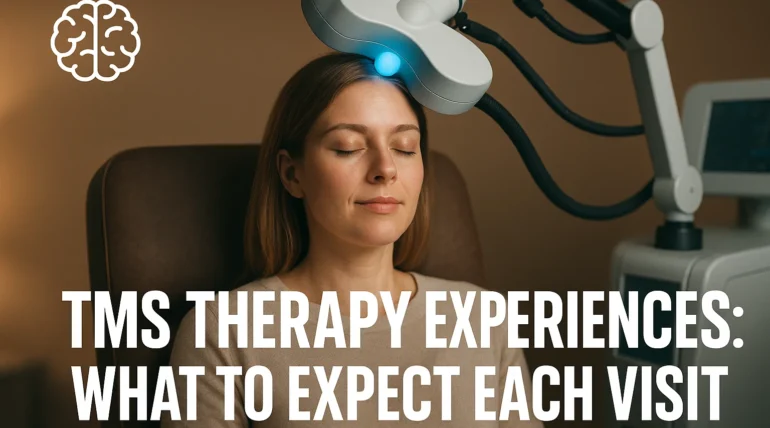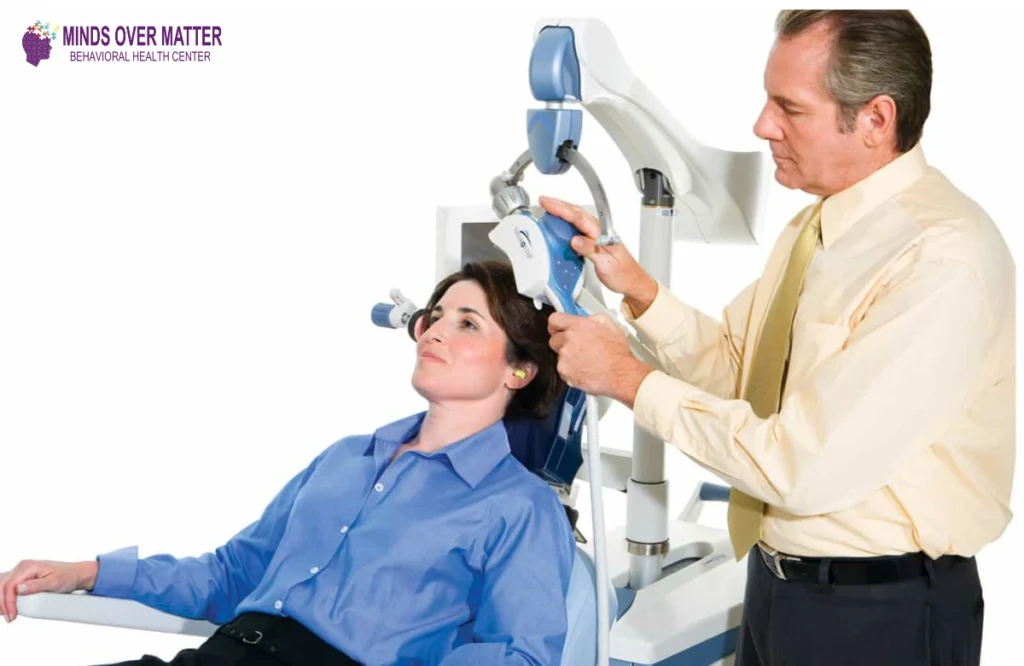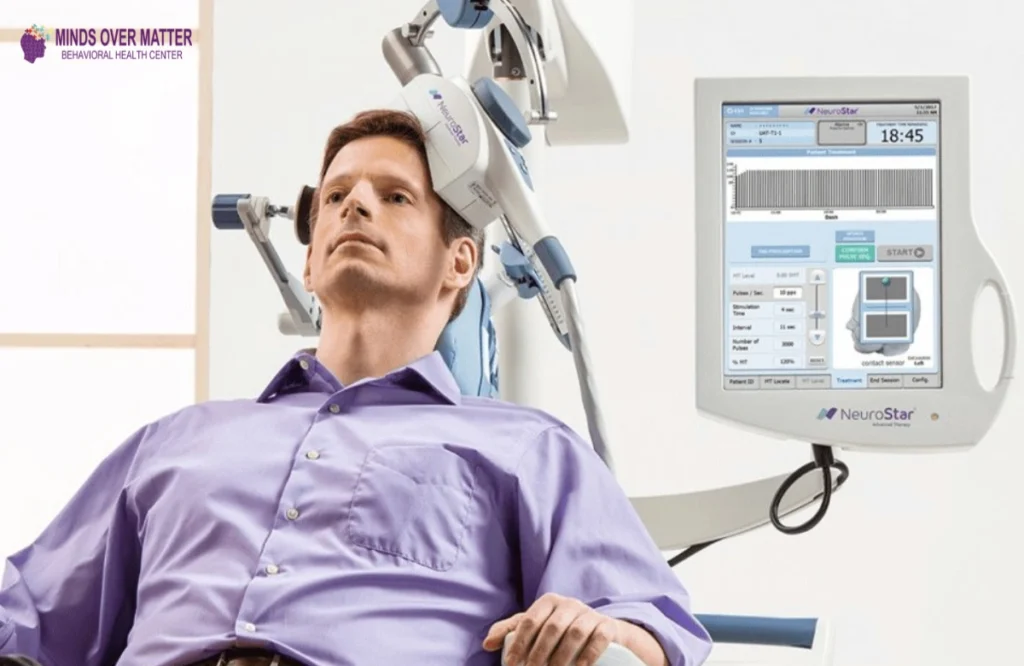
Have you ever questioned what the TMS therapy actually feels like? When you are thinking about yourself or a loved one, it is natural to wonder and even to feel some anxiety. And by the way, this treatment involves sending magnetic pulses to the brain and that can be frightening at least once you have never done the procedure.
The fact is that most patients accuse TMS treatment of being surprisingly pleasant and even life-altering. Here in this blog, we will discuss how the treatment is like, the actual experiences of the patients, and discuss what you can anticipate during, before, and after the sessions.
How TMS Works
TMS is the abbreviation of Transcranial Magnetic Stimulation. It is a non-invasive treatment in which magnetic fields are applied to some sections of the brain. These regions tend to be inactive in individuals who have depression or other mental disorders. TMS stimulates the brain by activating it, which is stimulated by the inpatient tms treatment of gauging brain activity.
In contrast to drugs, TMS does not need the intake of pills and the systemic adverse effects. Rather, it is exercised at the point of need which is the mood-regulating centers of the brain.
Who It’s For: Common Conditions Treated
TMS is mostly applied to individuals experiencing major depressive disorder and who are not relieved with medication. But it is also being researched and applied to:
- Anxiety disorders
- PTSD (post-traumatic stress disorder)
- OCD (obsessive-compulsive disorder)
- Chronic pain
- Migraines
It is worthy to mention that TMS is not a silver bullet, and in the case of most people, it is a new beginning after other therapies fail to help.

Why Patient Experiences Matter When Considering TMS
It is possible to read research studies which describe the effectiveness of TMS, but the real stories about patients make it the experience. They assist in responding to the big questions: Does it hurt? What will it feel like? When will I see the changes? It is possible to read about the experiences of other people and alleviate worries and create realistic expectations.
What Does TMS Therapy Physically Feel Like?
The Sensation During Treatment
A majority of the patients report that TMS feels like a tapping or clicking on the head. The device produces fast pulses, and most consider it to be like:
- A sap-sucker knocking at the head.
- The rhythmic pressing of the scalp with a pencil eraser.
- Minor vibrations or pulses on the treatment place.
Although the sound and the tapping may be alienating initially, the majority of individuals adapt fast in a matter of few sessions.
Is TMS Painful?
The direct answer: No, it is not painful to the majority of the population.
- Some of the patients experience slight discomfort initially.
- Twitching of small muscle in face or scalp sensitivity is common but it often settles over time.
- In case it is too strong technicians can regulate the intensity.
According to many patients, the initial session is the most apparent one, and in a few days, it becomes common and can be tolerated without any difficulties.
Duration and Frequency of Sessions
TMS isn’t a one-time procedure. Rather it operates under regular day to day sessions.
- Every session takes between 20 and 40 minutes.
- It is normally an 4-6-week schedule of treatments 5 days a week.
- Other patients can do maintenance sessions on an as-need basis.
It has become a part of everyday life of many people, such as attending an appointment after work or before work.
What Patients Say About Their First TMS Session
Anxiety or Nervousness Going In
Naturally, it is also normal to be nervous prior to your first TMS session. Patients are usually worried about whether it is going to hurt or become too strange. One can find the clicking machine sound and the thought of the magnetic pulses on the brain frightening.
Surprise at How Tolerable It Was
The majority of the patients feel relieved upon the first treatment. They realize:
- Tapping is strange, although it does not hurt.
- The process is simple.
- They are awake and do not require anesthesia at all.
At the end, most of them say: That was not as hard as I imagined it was.
Staff Support and Comfort Measures Provided
Much of being comfortable is a factor of staff. Technicians usually:
- Describe step-by-step.
- Provide earplugs in order to minimize clicking sounds.
- Make frequent check-ins.
- Deposition of the coil can be changed in case of discomfort.
This assistance will make the first visit which could be stressful a positive experience.
Experiences Over the Course of Treatment
Sensations Often Become Less Noticeable
Within several sessions, the patients tend to forget about the tapping. It turns into background noise–just a part of the process. Others even claim to be able to read, listen to music or even relax during the session.
Fatigue or Light Headedness After Sessions
Others are somewhat fatigued, light or mentally exhausted following therapy. Some other people are not bothered at all and resume work immediately. These have mild after-effects that are temporary and normally disappear as the body adapts.
Gradual Emotional and Mental Shifts
Over the weeks, many patients notice slow but meaningful changes:
- Feeling lighter in mood
- Less mental fog
- Greater ability to focus
- More restful sleep
- Increased motivation
Each person has a different time scale- some feel the difference within 1-2 weeks and others observe the difference further into the course.

Common Emotional and Psychological Responses
When Do People Start to Feel Results?
- Others report an improvement during the first 1-2 weeks.
- Others do not start seeing the improvements until towards the end of the 4-6 weeks program.
- Some of them require maintenance to sustain outcomes.
Emotional Ups and Downs During Treatment
It is not necessarily an upward linear path. Some patients experience:
- Temporary mood swings
- Mild anxiety spikes
- Brain adjusting with emotional swings.
This is natural and can be easily treated as the course of treatment goes on.
Hope, Relief, and Improved Mood in Successful Cases
For many, the reward is worth it:
- The feeling of hope upon years of struggle.
- Symptoms of heavy depression relieved.
- A happier disposition and revived attitude towards life.
Are There Any Side Effects?
Mild Headaches or Scalp Irritation
The side effects are minor and the most common:
- During or post treatment headaches.
- Flush or pain where the treatment has been done.
These normally disappear as one rests, gets hydrated, or takes pain killers available over the counter.
Rare but Possible: Mood Swings, Anxiety Spikes, or Seizures
In rare cases patients might suffer:
- Increased anxiousness or agitation.
- Mood fluctuations
- Seizures (extremely rare and typically high-risk patients)
These risks are reduced by screening patients carefully by providers.
Comparison With Medication Side Effects
TMSS has minimal side effects compared to the antidepressants. Unlike pills, it does not normally cause:
- Weight gain
- Sexual side effects
- Digestive issues
- Drowwiness during the day.
This is among the reasons why patients have turned to TMS when drugs have failed to help them.
What Real Patients Recommend
Give It Time – Results Aren’t Instant
Many say: “Don’t give up too soon.” TMS is slow acting, and improvement occurs over weeks. Patience is key.
Be Honest With Your Provider About Discomfort
In case the tapping is too vigorous, complain. Technicians can:
- Adjust coil placement
- Change intensity
- Offer comfort strategies
Combine With Therapy or Lifestyle Changes for Best Results
TMS is even more effective in combination with:
- Talk therapy or counseling
- Exercise and movement
- Healthy eating
- Consistent sleep habits
Conclusion
Sight of patients reveal that TMS is not normally as difficult as anticipated. Though the initial session can be a weird experience, it gets used to it and the process becomes comfortable. The concept of having magnetic pulses might be a frightening experience, however, once the treatment begins, the majority of patients report it to be an easy and common practice. Some even anticipate sessions due to the good changes that they have brought.
In case you are thinking of TMS, you are not alone. It has helped thousands of people and given them a new hope of their mental health. Experience can teach you how to do it.
Visit Minds Over Matter to find out more and find out whether or not TMS therapy is the right path. Learn about patient experiences, tips to improve your mental health and find information to get you started.
FAQs
Majority of patients experience only mild tapping- painful at the initial stages but not very painful.
Others experience changes within 1-2 weeks and others require the entire period of treatment.
Oh, you can drive right away and are completely awake.
Most of them are happy with long-term outcomes, whereas others might require maintenance.
For some, yes. It is more effective in combination with medication and therapy to others.
TMS does not necessitate anesthesia and it does not lead to loss of memory unlike ECT.


